REcube: REthink, REvive, REuse
REcube: REthink, REvive, REuse
The course aims to impart knowledge for the green regeneration of the European Concrete Heritage.
Course description
The MOOC provides an introductory overview of the conservation of modern reinforced concrete architecture through a multidisciplinary perspective. The course begins with a general introduction to intervention strategies and priorities, and then addresses historical research and the evaluation of the landscape and urban context in which the structure is set. Attention is given both to the architectural and structural dimensions, and to the anthropological and sociological aspects that contribute to defining the cultural significance of the building. The course then moves to the technical field, focusing on structural and material assessment methods, analysis procedures, and typical diagnostic and monitoring approaches. Specific sessions are dedicated to advanced digital tools such as Heritage Building Information Modeling (HBIM) and City Information Modeling (CIM), before concluding with an overview of possible retrofitting solutions.
Total workload of the course: 25 hours
This MOOC is provided by Politecnico di Milano, Technische Universiteit Delft, Universidade do Minho, Università degli Studi di Roma La Sapienza, Università degli Studi di Napoli Federico II, Université Libre de Bruxelles, Politecnico di Torino, Middle East Technical University, Budapest University of Technology and Economics, Universidad Politecnica de Madrid, HafenCity Universität Hamburg, Fondation PLN Project and ICOMOS Italia – Consiglio Italiano dei Monumenti e dei Siti.
This MOOC is one of the outputs of the Erasmus+ REcube project (No.KA220-HED-1BCB4FA7).


Co-funded by the Erasmus+ Programme of the European Union
The European Commission’s support for the production of this publication does not constitute an endorsement of the contents, which reflect the views only of the authors, and the Commission cannot be held responsible for any use which may be made of the information contained therein.
Intended Learning Outcomes
By actively participating in this MOOC, you will achieve different intended learning outcomes (ILOs).
Week 1
-
Distinguish between the different approaches required by conservation, preservation, and maintenance.
ESCO: architectural conservation -
Evaluate the correct approach for interventions on existing construction.
ESCO: architecture and construction
Week 2
-
Recognize the proper archival survey methodology and apply the right documental evaluation.
ESCO: search historical sources in archives -
Empower the correct historical analysis of materials and construction techniques.
ESCO: source criticism
Week 3
-
Interpret international guidelines for the conservation of landscape and urban heritage.
ESCO: architectural conservation -
Assess landscape and urban environments by applying appropriate evaluation methods.
ESCO: landscape architecture -
Compare heritage contexts to identify shared challenges and evaluate their role in sustainable development.
ESCO: promote sustainable management
Week 4
-
Collect information about the building and select the most significant for the intervention.
ESCO: gathering information from physical or electronic sources ESCO: source criticism -
Understand and analyze the construction technique.
ESCO: construction methods
Week 5
-
Analyze contributions of anthropological and sociological approaches to understanding cultural meaning of architectural and urban spaces.
ESCO: study human societies -
Apply social research methods to investigate collective memory, perception, and intangible values of heritage sites.
ESCO: social sciences -
Evaluate how urban traditions and territorial visions influence resilience and future perspectives of the built environment.
ESCO: urban planning
Week 6
-
Analyze typical pathologies of reinforced concrete structures and related mitigation measures.
ESCO: examine the conditions of buildings ESCO: inspect concrete structures -
Understand the role of sensors in monitoring and analyzing existing structures.
ESCO: surveying methods ESCO: non-destructive testing -
Grasp fundamentals of fire safety of materials and structures.
ESCO: fire safety regulations
Week 7
-
Interpret cracking patterns on reinforced concrete buildings.
ESCO: examine the conditions of buildings ESCO: inspect concrete structures -
Understand basics of available diagnostic techniques.
ESCO: non-destructive testing
Week 8
-
Apply survey and documentation techniques, including point cloud modeling, to represent built heritage in HBIM environments.
ESCO: surveying methods -
Analyze challenges and strategies for data management in HBIM, ensuring accuracy and consistency.
ESCO: manage data -
Evaluate approaches to accessibility and openness of heritage data to foster collaborative knowledge sharing.
ESCO: share through digital technologies
Week 9
-
Compare structural strengthening strategies with architectural preservation needs.
ESCO: adjust engineering designs -
Evaluate advanced materials and methods for retrofitting reinforced concrete structures.
ESCO: civil engineering -
Identify alternative solutions and regulatory approaches that allow adaptation of heritage structures while minimizing intrusive interventions.
ESCO: meet the requirements of legal bodies
Prerequisites
No prerequisite knowledge is required for this course.
Activities
Over and above consulting the content, in the form of videos and other web-based resources, you will have the opportunity to discuss course topics and to share ideas with your peers in the Forum of this MOOC.
Section outline
-
-
-
Week 1 introduces the topic of protection of reinforced concrete architectural heritage.
-
Week 2 explores historical research, archival survey and fundamentals of conservation.
-
Week 3 addresses the evaluation of the setting, with attention to landscape and urban context.
-
Week 4 focuses on architectural and structural evaluation, including geometrical survey techniques and material construction analysis.
-
Week 5 broadens the perspective with anthropological and sociological evaluation, highlighting the cultural and social dimensions of conservation.
-
Week 6 examines recurring structural defects, diagnostic techniques, and procedures for structural and material assessment.
-
Week 7 discusses fire safety/resistance of existing reinforced concrete structures, preventive conservation measures, and monitoring/sensing systems for structural health evaluation.
-
Week 8 is dedicated to advanced digital tools, including Heritage Building Information Modeling (HBIM) and City Information Modeling (CIM).
-
Week 9 concludes with the analysis of possible retrofitting solutions.
-
Assessment
Your final grade for the course will be based on the results of your answers to the assessed quizzes. You have an unlimited number of attempts at each quiz, but you must wait 15 minutes before you can try again. You will have successfully completed the course if you score 60% (or higher) in each one of the assessed quizzes. The maximum score possible for each quiz is given at the beginning of the quiz. You can view your score in the quiz on your last attempt or on the 'Grades' page.
Certificate
You can achieve a certificate in the form of an Open Badge for this course, if you reach at least 60% of the total score in each one of the assessed quizzes and fill in the final survey.
Once you have completed the required tasks, you will be able to access ‘Get the Open Badge’ and start issuing the badge. Instructions on how to access the badge will be sent to your e-mail address.
The Badge does not confer any academic credit, grade or degree.
Information about fees and access to materials
The course is delivered in online mode and is available free of charge.
Course faculty
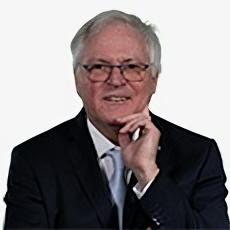
György L. Balázs
Teacher
Engineer, PhD. He is Professor at the Budapest University of Technology and Economics in Hungary. His main fields of activities are: experimental and analytical studies on concrete, reinforced concrete and prestressed concrete structures, FRC (fibre reinforced concretes), FRP (fibre reinforced polymers) as internally bonded reinforcements, externally bonded reinforcements or near surface mounted reinforcements, durability, service life, fire resistance and fire design, bond and cracking, HPC (high performance concrete) and UHPC, sustainability. Elected President of fib for 2011 and 2012. Served as Immediate Past President of fib for 2013 and 2014, continues then as Honorary President. He founded the series of fib International PhD Symposia in Civil Engineering in 1996.
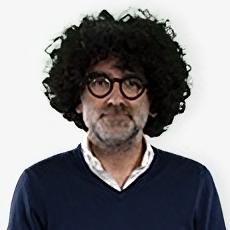
Andrea Canziani
Teacher
Architect, PhD. Architect at the Ministry of Culture for the Liguria Region, he is directing the office for Education and University Co-chair of the DOCOMOMO International Specialist Committee on Theory and Education ISC E+T Member of the International DOCOMOMO Conference Scientific Committee Expert Member of ICOMOS International Scientific Committee on 20th Century Heritage.
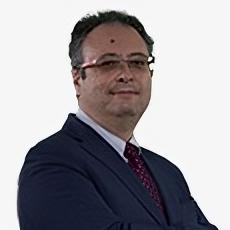
Rosario Ceravolo
Teacher
Professor, MSc in Civil Engineering and PhD in Structural Engineering both from the Politecnico di Torino, where he is currently head of the Earthquake Engineering & Dynamics lab and deputy director of the Responsible Risk Resilience interdepartmental Centre (R3C). Active role in many international and national projects and networks regarding earthquake engineering, risk, resilience, architectural heritage and infrastructure. He is in charge of the monitoring programs for many important structures, including the Sanctuary of Vicoforte, and Turin Exhibition Center pavilions, for which he and his team were awarded a Keeping It Modern grant by the Getty Foundation of Los Angeles.
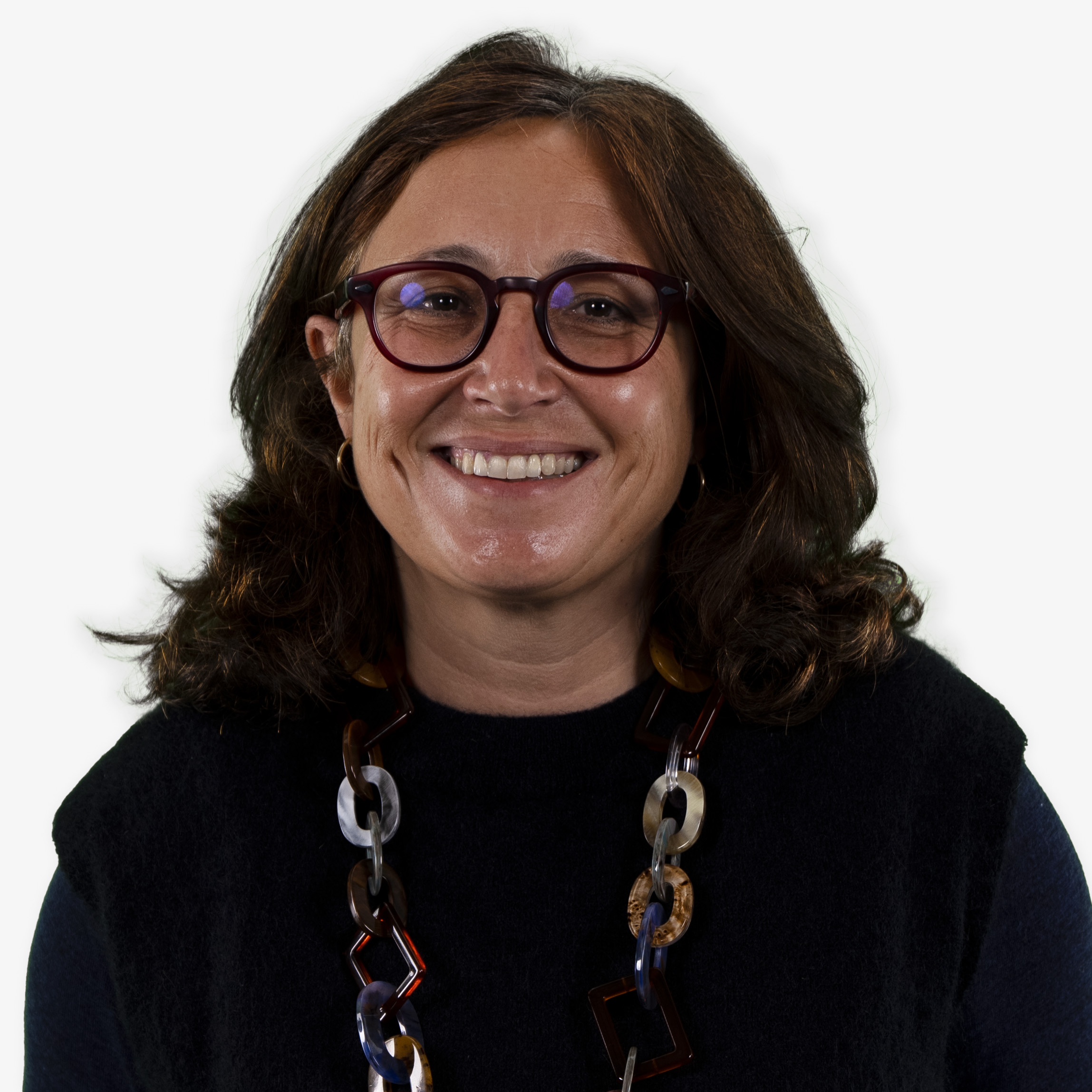
Cristiana Chiorino
Teacher
Architect, PhD. Since 2011 she collaborates with PLN Project as an advisor on the conservation and protection of Nervi’s architectural heritage in Italy and worldwide, with particular attention to the buildings under threat. She is member of the Working Group “Historical Spatial Structures” of the IASS International Association for Shell and Spatial Structures.
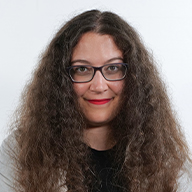
Eleonora D’Agostino
Teacher
Eleonora D'Agostino is a socio-cultural anthropologist whose research explores the perception of sacredness in contemporary societies, conspiracy theories, countercultures, and the socio-political uses of fantastic and speculative imaginaries. She holds a postgraduate diploma in demo-ethno-anthropological cultural heritage (Sapienza University of Rome) and a postgraduate degree in environmental humanities (Roma Tre University), and she recently completed an advanced course in design and digital technologies for intangible cultural heritage (Politecnico di Milano; University of Milan). Since 2021, she has been a curator for CRUSH Collettiva, a project devoted to events and exhibitions focused on cultural imaginaries. Beyond her academic work, she is involved in science communication as a speaker for CICAP (Italian Committee for the Investigation of Claims on Pseudosciences) and a contributing editor for the literary magazine Massacro (La Nuova Carne Editions). Forthcoming publication: “Contemporary Paganism and Metal: Convergences Between Two Communities of Practice”, in “Rinascite Pagane” (Mondadori, 2025).
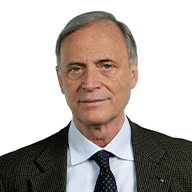
Marco di Prisco
Teacher
Marco di Prisco is Full Professor of Structural Engineering since 2002, he is lecturer of Structural Design and Design of Environmental and Protective Structures. Head of the Materials and Structures Lab of the Lecco Campus, he is member of the Presidium and national delegate of fib and of many technical and scientific committees. He was Head of the Department of Structural Engineering, Coordinator of the Master of Science in Civil Engineering for Risk Mitigation and expert member of the RILEM Development Advisory Committee. Author of over 350 papers, he organized several International Conferences. Scientific Responsible of numerous contracts with private companies, with Lombardy Region and with the EU on new high-performance cement-based composites, innovative and sustainable prefabricated structures, risk mitigation in the design of infrastructures. He is Technical Director of the DSCERBA Engineering Company, where he is introducing in real applications interesting novelties of new materials. Coordinator of 7 Summer Schools and Scientific Coordinator of the Laboratorio Nervi.
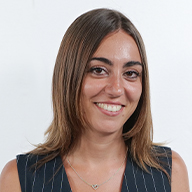
Lucrezia Eritrei
Teacher
Lucrezia Eritrei is an art historian specializing in the history of collecting and artistic exchanges between Italy and Eastern Europe in the early modern period. Born in Rome in 1992, she earned her BA in History and Conservation of Artistic and Archaeological Heritage from the University of Roma Tre in 2016. She continued her academic training at the same institution, completing her MA in History of Art with highest honors (cum laude). In 2019, she was awarded a postgraduate research grant by the Fondazione Ermitage Italia for a project focusing on Russian travelers and collectors in eighteenth-century Rome. In 2021, she completed a second-level Master’s degree in “Scientific Tools for the Knowledge and Protection of Cultural Heritage”, further expanding her methodological expertise in heritage conservation and documentation. Since 2023, she has been enrolled in the School of Specialization in Historical-Artistic Heritage at the University of Bologna, and in 2024 she was admitted to the XL cycle of the National PhD Program in Cultural Heritage Sciences at the University of Rome “Tor Vergata.” Her current doctoral research focuses on the history of collecting and display practices in the modern age. Her academic trajectory reflects a strong interdisciplinary foundation and a commitment to investigating the intersections between art, diplomacy, and cultural identity across national borders.
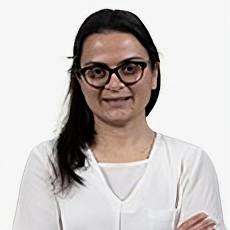
Stefania Landi
Teacher
M.D. in Building Engineering and Architecture and Ph.D. in Architectural Restoration at the University of Pisa, where she is currently research fellow and lecturer of Architectural Restoration. As member of ICOMOS Italy-National Scientific Committee on 20 Century Heritage, and as Vice President of the ICOMOS-International Scientific Committee on 20 Century Heritage, she is involved in research and advocacy activities related to 20th Century architecture, such as the H2020 InnovaConcrete project and the World Monuments Watch nominations reviews. She is author of several publications on the conservation of 20th Century architecture and she is currently consultant for the new edition of “Conserving Concrete Heritage. An annotated bibliography” by The Getty Conservation Institute.
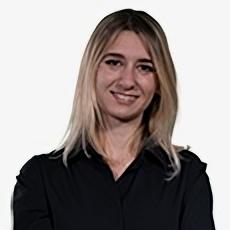
Erica Lenticchia
Teacher
Dr. Erica Lenticchia is a post doctoral fellow at the Politecnico di Torino, within the EED Lab. She received a Ph.D. in Architectural and Landscape Heritage (area of study: Structural and Earthquake Engineering) with a thesis on vibration based monitoring of complex architectural heritage buildings. Since 2019 she is part of the team that was awarded a Keeping It Modern grant by The Getty Foundation of Los Angeles for the structural analysis and preservation of the halls built by Pier Luigi Nervi in the Turin Exhibition Centre.
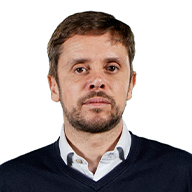
David Lo Buglio
Teacher
David Lo Buglio is architect and has a PhD in the building arts and urban planning. Since 2007, he has been involved as a teacher and researcher in the Faculty of Architecture at ULB (Brussels). He teaches the "Theory of Representation" course and coordinates the "Graphic Documentation of the Built Heritage" module for Masters students. In addition to his teaching activities, he supervises a number of research projects within the AlICe laboratory (ULB) and has been a member of the UPR MAP (CNRS, France) since 2010. His personal work focuses on systems of representation in architecture. More specifically, for a number of years he has been investigating fields relating to the survey and documentation of built heritage and the characterization of architectural shapes. Recently, his research has extended to examining representation as a cultural and critical vehicle for architecture. His work has been recognized by an international prize in 2013 (at the Digital Heritage Conference), by the nomination of his doctoral research for the French Academy of Architecture's thesis prize in 2017, and by the scientific dissemination prize of the Université libre de Bruxelles, which he received in 2024. Alongside his academic involvement, since 2015 he has also been developing an architectural practice within the "DéDal architectes" office, where he is a partner.
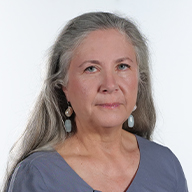
Elisabetta Margiotta Nervi
Teacher
Elisabetta Margiotta Nervi is an art historian with over 30 years of international experience in conceiving and delivering exhibitions and cultural events. Since 2008, she has served as General Secretary of the Pier Luigi Nervi Project Foundation, created to preserve and promote the legacy of the Italian engineer and structural designer Pier Luigi Nervi. Within the Erasmus+ Partnership in Higher Education REcube: REthink, REvive, Reuse, Elisabetta is assistant coordinator, contributing to the project’s vision of reactivating modern architectural heritage through innovative approaches to education and practice. She is also Project Coordinator of CONCRETO, the Erasmus+ Alliance for Education and Enterprises dedicated to the green rehabilitation of European concrete architecture, and executive coordinator of the Laboratorio Nervi at the Politecnico di Milano in Lecco.
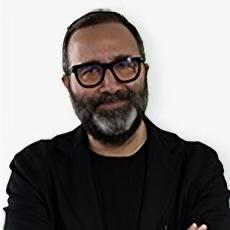
Giovanni Multari
Teacher
Architect, associate professor of Architectural and Urban Composition at the Department of Architecture (DiARC), University of Naples Federico II. He is member of the Teaching Board of the Second Level Master in Design of Excellence of the Historical City and member of Pier Luigi Nervi Project. In 1995 he founded the CORVINO + MULTARI studio with Vincenzo Corvino. Gold medal to Italian architecture (2006) for the restoration of the Pirelli Tower. Projects and works have been presented in exhibitions and published on Casabella, Abitare, The Plan, Domus, Area, d'AA, Concept, World Architecture.
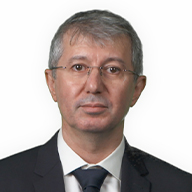
Koray Pekeriçli
Teacher
Mehmet Koray Pekeriçli works as an Associate Professor of Building Science at the Department of Architecture, Middle East Technical University, in Ankara, Turkey. He holds a Ph.D. (2011) and M.Sc. (2002) in Construction Management at Reading University, United Kingdom. Dr. Pekeriçli worked as a researcher at an NSF funded research project at Carnegie Mellon University in the USA between 2003-2006. He also took part in an EPSRC funded research project as a researcher at Reading University in the UK between 2006-2011. His interest areas cover Building Informatics, Building Information Modelling, Construction Management, High Performance Smart Buildings, and Smart Cities.
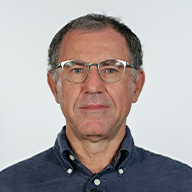
Francesco Romeo
Teacher
Since 2021 he is full professor of Solid and Structural Mechanics at the Department of Structural and Geotechnical Engineering (DISG) of Sapienza University of Rome. Graduated in Civil Engineering at Sapienza, he received a MS in Engineering from Johns Hopkins University and a Ph.D. from DISG. His research interests are in the dynamics and morphology of structural systems. He is Associate Editor of the Journal of Mechanical Engineering Science (Sage), reviewer of the major international journals in the field of structural dynamics, founding partner of Diamonds srl, Spin-Off of Sapienza for diagnostics and monitoring of structures. He is member of Euromech, Iass, Fib, Icomos, Docomomo, Aimeta. Author of more than 70 peer reviewed publications, he gave invited seminars at MIT, Technion, CISM, TU Wien, Univ. of Aberdeen, USC. Recently funded projects as PI, are:“Integrated monitoring and modeling of structural and environmental performance of heritage reinforced concrete buildings”, Sapienza, 2024-25; “Definition of a methodology for fast dynamic structural monitoring applications”, ANAS, 2023-25; “REcube: REthink, REvive, REuse - Transmitting the knowledge for the green regeneration of the European Concrete Heritage”, Erasmus+ KA220, Sapienza team, 21-24; “Seismic assessment and structural health monitoring of Palazzetto dello Sport by P.L. Nervi and A. Vitellozzi”, Rome Municipality, 20-22; "The Flaminio Stadium by Pier Luigi and Antonio Nervi in Rome: an interdisciplinary conservation plan”, Getty Foundation, 17-20.
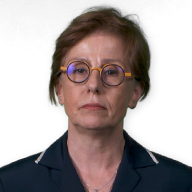
Aysen Savas
Teacher
After being trained as an architect in the METU Department of Architecture and Bartlett School of Architecture, she received her PhD from the History, Theory, and Criticism Program at MIT. For the last 20 years she has been converting historical buildings into museums and curating national and international exhibitions. Currently, she is teaching courses on representation and architectural design at METU. Her publications include exhibition catalogues, books and articles particularly on the transformation of space by means of architectural interventions and the preservation of Modern Architecture. She is the founder of a non-profit organization: Exhibition Design Workshop that established and designed museums such as Sabancı Museum, Erimtan Archeology Museum (EMYA finalist 2017), MKEK Technology Museum and METU Science and Technology Museum. Her achievements include a number of national and international awards and fellowships, including the Getty Keeping It Modern Grant, AIA Architectural Award, AAUW Research Prize, Schlossman Prize in historical research, Sir John Soane Museum, CCA and Bologna University fellowships. The museological theme she had developed for the Turkish Pavilion at the World EXPO in Shanghai won The Silver Medal in 2010.
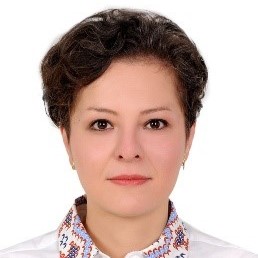
Fatemeh Soltanzadeh
Teacher
Fatemeh Soltanzadeh received her PhD from the University of Minho in 2016 and worked as a Researcher at ISISE - The Institute for Sustainability and Innovation in Structural Engineering. Her expertise includes concrete structural behavior, durability, maintenance and retrofitting, as well as cementitious and innovative repair materials. She has authored publications in international journals and conferences and holds a patent on cementitious materials, which has been recognized with three international medals. From 2019 to 2024, she led an R&D project on durable floating infrastructure for offshore renewable energy installation.
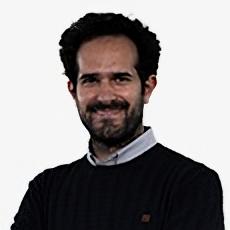
Leonardo Todisco
Teacher
Engineer, PhD. He is an Assistant Professor in Structural Engineering at the Technical University of Madrid, where he carries out his activity as lecturer, researcher and consultant on structures. He works on combining classical structural principles with interactive design-oriented tools for the conceptual design of high-performance structures. The main contribute provided by his work led to the 13th IASS Hangai Prize and the UPM PhD Excellence Award. He earned a Ph.D and a M.Eng. in Structural Engineering from the Technical University of Madrid, and a M.Sc. and a B.Sc. in Civil Engineering from the Technical University of Bari. During his studies, he was visiting student at the ILEK, University of Stuttgart, at the Technical University of Valencia and, during his PhD, at the Massachusetts Institute of Technology. From February 2018, he is the president of the Young Member Group of ACHE (Spanish Association of Structural Engineering).
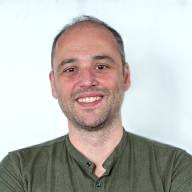
Giulio Zani
Teacher
Assistant Professor of Structural Analysis and Design at Politecnico di Milano, where he teaches Structural Design and Structural Safety. His research focuses on the assessment, monitoring and maintenance of existing bridges, the development and application of FRCM composites for retrofitting, and the use of SFRC and UHPFRC in both experimental and numerical studies. He has consolidated expertise in textile reinforced concrete systems and in full-scale experimental testing, and is actively involved in the conservation and rehabilitation of modern concrete heritage. Outreach and Programme Coordinator of the Nervi Laboratory, he is Assistant Coordinator of the Erasmus+ project REcube and Local Coordinator of the Erasmus+ project CONCRETO.
Contact details
If you have any enquiries about the course or if you need technical assistance please contact pok@polimi.it. For further information, see FAQ page.